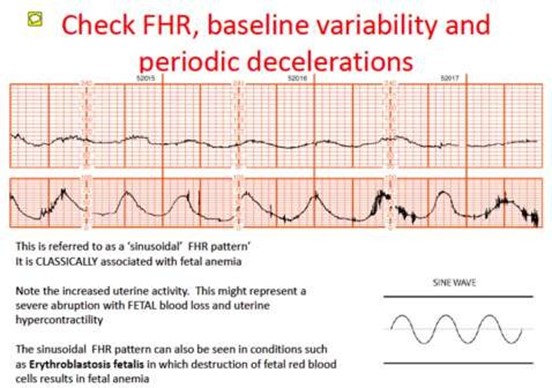A nurse is caring for a client who reports spontaneous rupture of membranes. The nurse observes fetal bradycardia on the FHR tracing and notices that the umbilical cord is protruding.
After calling for assistance and notifying the provider, which of the following actions should the nurse take next?
Cover the umbilical cord with a sterile saline saturated towel.
Perform a vaginal examination by applying upward pressure on the presenting part.
Administer oxygen via non-rebreather mask at 8 L/min.
Initiate an infusion of IV fluids for the client.
The Correct Answer is B
If a prolapsed cord is identified, the nurse should perform a vaginal examination and ensure the presenting part is pushed upwards to relieve pressure on the cord.
Choice A) is not correct because while it is important to cover the cord with a sterile saline saturated towel if it has prolapsed externally 1, it is not the next action after calling for assistance and notifying the provider.
Choice C) is not correct because administering oxygen via non-rebreather mask at 8 L/min is not mentioned as an immediate intervention for a prolapsed cord .
Choice D) is not correct because initiating an infusion of IV fluids for the client is not mentioned as an immediate intervention for a prolapsed cord .
Nursing Test Bank
Naxlex Comprehensive Predictor Exams
Related Questions
Correct Answer is A
Explanation
A. The nurse should monitor for chorioamnionitis, which is an infection of the amniotic sac and fluid.
The other choices are not potential complications of gonorrhea:
B. Vaginal laceration during birth is not a complication of gonorrhea.
C. Oligohydramnios is not a complication of gonorrhea.
D. Excessive bleeding after birth is not a complication of gonorrhea.
Correct Answer is C
Explanation
A nurse assessing the results of a nonstress test for an antepartal client at 35 weeks of gestation should indicate the need for further diagnostic testing if there are no late decelerations noted with three uterine contractions of 60 seconds in duration within a 10-min testing period.

Choice A is incorrect because an increase in fetal heart rate to 150/min above the baseline of 140/min lasting 10 seconds in response to fetal movement within a 40-min testing period is a normal result.
Choice B is incorrect because irregular contractions of 10 to 20 seconds in duration that are not felt by the client do not indicate the need for further diagnostic testing.
Choice D is incorrect because three fetal movements perceived by the client in a 20-min testing period do not indicate the need for further diagnostic testing.
Whether you are a student looking to ace your exams or a practicing nurse seeking to enhance your expertise , our nursing education contents will empower you with the confidence and competence to make a difference in the lives of patients and become a respected leader in the healthcare field.
Visit Naxlex, invest in your future and unlock endless possibilities with our unparalleled nursing education contents today
Report Wrong Answer on the Current Question
Do you disagree with the answer? If yes, what is your expected answer? Explain.
Kindly be descriptive with the issue you are facing.
